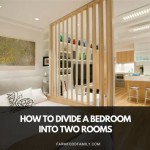Standard Bedroom Window Size for Blinds: A Comprehensive Guide
Selecting the appropriate size blinds for bedroom windows is a crucial aspect of interior design and functionality. Beyond aesthetics, correctly sized blinds provide optimal light control, privacy, and energy efficiency. Understanding standard bedroom window dimensions and how these dimensions relate to blind sizes is essential for homeowners and decorators alike. This article will delve into the common window sizes found in bedrooms and offer insights into choosing blinds that perfectly complement these dimensions.
The term "standard" in window sizing can be somewhat misleading. While manufacturers often adhere to widely accepted measurements, variations exist across different home styles, architectural designs, and regional building codes. Therefore, accurately measuring individual windows is paramount before purchasing any blinds, even when assuming a standard size. Neglecting this step can lead to ill-fitting blinds that are visually unappealing and functionally inadequate.
Factors influencing bedroom window sizes include the age of the house, the architectural style (e.g., ranch, colonial, modern), and the intended purpose of the room. Larger windows may be favored in master bedrooms for increased natural light and views, while smaller windows may be used in guest rooms or nurseries. The placement of the window within the wall also plays a role, as windows positioned higher may be narrower to maintain proper wall support and structural integrity.
Identifying Common Bedroom Window Sizes
Although variations exist, certain window sizes are commonly encountered in bedrooms. These sizes often serve as a starting point when considering blind purchases. Understanding these typical dimensions can help narrow down the search and streamline the selection process.
One frequently seen bedroom window size is 36 inches wide by 48 inches high. This size is often used in smaller bedrooms or guest rooms, providing adequate light without overwhelming the space. Blinds designed for this window size are readily available in various styles and materials.
Another common dimension is 36 inches wide by 72 inches high. This taller window is often found in older homes or bedrooms with higher ceilings. The increased height allows for more natural light penetration and a more expansive view. Blinds for this window size may require a slightly longer drop to fully cover the windowpane.
A larger window size, 48 inches wide by 48 inches high, is also commonly used, particularly in master bedrooms or rooms designed to maximize natural light. This wider window provides a more open feel to the room. Blind selection should consider the added width to ensure adequate coverage and ease of operation.
Furthermore, 24 inches wide by 36 inches high windows are frequently found in smaller bedrooms, nurseries, or bathrooms adjacent to the bedroom. These smaller windows often require custom-sized blinds or careful selection from stock options to ensure a proper fit. The smaller size also allows for more creative blind designs and materials without overwhelming the space.
It is crucial to remember that these are only examples of commonly found sizes. Always measure the actual window opening before purchasing blinds. Measure both the width and the height of the window opening to the nearest eighth of an inch. These accurate measurements will ensure a proper fit and optimal performance of the blinds.
Measuring Accurately for Optimal Blind Fit
Accurate measurement is the cornerstone of a successful blind installation. Even if the window appears to be a standard size, slight variations can significantly impact the fit and function of the blinds. Following a systematic approach to measuring will minimize errors and ensure a professional-looking result.
The first step is to determine whether an inside mount or an outside mount is desired. An inside mount positions the blinds within the window frame, offering a cleaner, more integrated look. An outside mount positions the blinds on the wall or trim surrounding the window, providing greater light control and a more traditional appearance. The measuring process differs slightly depending on the chosen mounting method.
For an inside mount, measure the width of the window frame at the top, middle, and bottom. Use the narrowest measurement as the width for the blinds. Next, measure the height of the window frame on the left, center, and right sides. Use the longest measurement as the height for the blinds. It is important to note that many manufacturers will deduct a small amount (typically ¼ to ½ inch) from the width of inside-mount blinds to ensure a smooth fit within the frame. Always confirm the manufacturer's specific instructions regarding deductions before placing the order.
For an outside mount, measure the width and height of the area to be covered by the blinds. Typically, the blinds should extend beyond the window frame on all sides to provide maximum light blockage and privacy. A common recommendation is to add 2 to 3 inches to both the width and the height of the window frame measurement. This overlap ensures that light cannot seep in around the edges of the blinds. When measuring the height, consider the desired placement of the headrail and the length of any valance or decorative trim that may be included with the blinds.
It is always advisable to use a metal measuring tape for accuracy. Cloth measuring tapes can stretch or distort, leading to inaccurate measurements. Double-check all measurements before placing an order, and consider having a second person verify the measurements to minimize errors. If unsure about the measuring process, consult with a professional installer or refer to online tutorials for detailed guidance.
Choosing the Right Blind Style and Material
Once the window dimensions are accurately determined, the next step is to select the appropriate blind style and material. Various blind styles cater to different aesthetic preferences and functional needs. The material choice also significantly impacts the blinds' durability, light control capabilities, and overall appearance.
Horizontal blinds, such as Venetian blinds and mini blinds, are a popular choice for bedrooms due to their versatility and ease of use. These blinds consist of horizontal slats that can be tilted to control the amount of light entering the room. Venetian blinds typically have wider slats, offering a more classic and sophisticated look, while mini blinds have narrower slats, providing a more contemporary and streamlined appearance. Horizontal blinds are available in various materials, including aluminum, wood, and faux wood.
Vertical blinds are another option for bedrooms, particularly for sliding glass doors or large windows. These blinds consist of vertical slats that can be rotated to control light and privacy. Vertical blinds are often made of vinyl, fabric, or wood and are available in a wide range of colors and textures.
Cellular shades, also known as honeycomb shades, are a popular choice for bedrooms due to their energy-efficient design. These shades consist of a honeycomb-like structure that traps air, providing insulation and reducing heat loss in the winter and heat gain in the summer. Cellular shades are available in various opacities, from sheer to blackout, allowing for customized light control. They are typically made of fabric and are available in a wide range of colors and patterns.
Roman shades are a stylish option for bedrooms, offering a soft and elegant look. These shades consist of a single piece of fabric that folds up into pleats when raised. Roman shades are available in various fabrics, including cotton, linen, and silk, and can be customized with decorative trims and embellishments. They provide excellent light control and privacy while adding a touch of sophistication to the room.
The material choice should be based on several factors, including the desired level of light control, privacy, durability, and maintenance requirements. For bedrooms requiring complete darkness, blackout blinds or shades are recommended. These blinds are typically made of opaque materials that block out all light. For bedrooms requiring partial light control, light-filtering blinds or shades are a better option. These blinds allow some light to pass through, creating a soft and diffused glow.
Consider the humidity levels in the bedroom when selecting blind materials. Wood blinds are not recommended for bathrooms or other rooms with high humidity, as they can warp or crack. Faux wood blinds are a better option for these areas, as they are moisture-resistant and easy to clean. Fabric blinds should be treated with a stain-resistant finish to protect them from spills and stains.
Ultimately, the right blind style and material will depend on personal preferences and the specific needs of the bedroom. By carefully considering these factors, homeowners can select blinds that perfectly complement their windows and enhance the overall aesthetic and functionality of the room.

Bedroom Window Sizes Dimensions

Standard Sizes For Window Blinds Hunker

Your Guide To Standard Window Sizes Forbes Home

What Are Standard Window Sizes Choosing The Right Windows

How To Measure For Window Blinds Shades Curtains Allure

Blind Size Calculator

How To Install Blinds Window Shades For Windows Doors

Bedroom Blinds Ideas Hillarys

Small Window Blinds Narrow Options The Shade Store

Blinds And Window Shades Buying Guide








